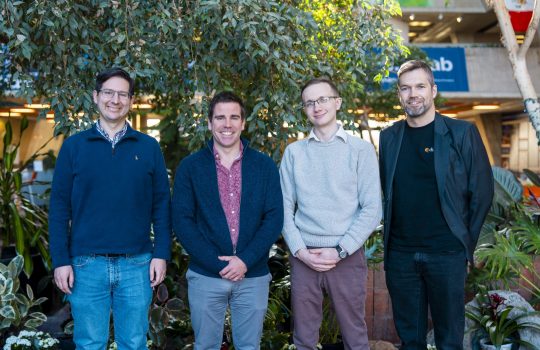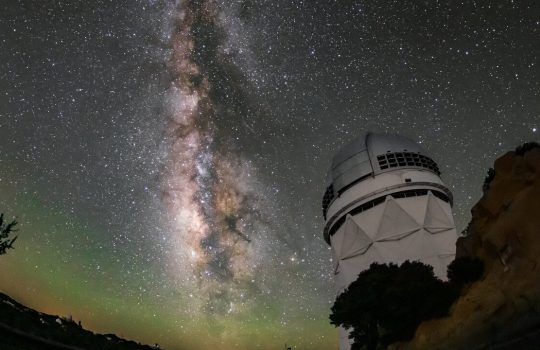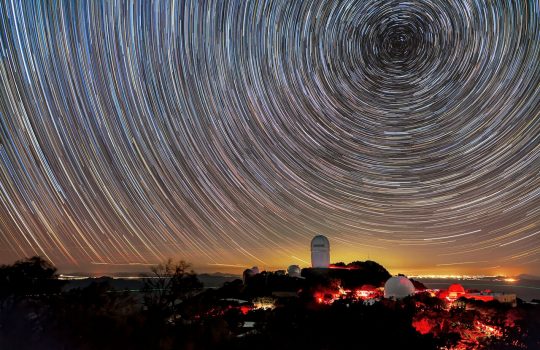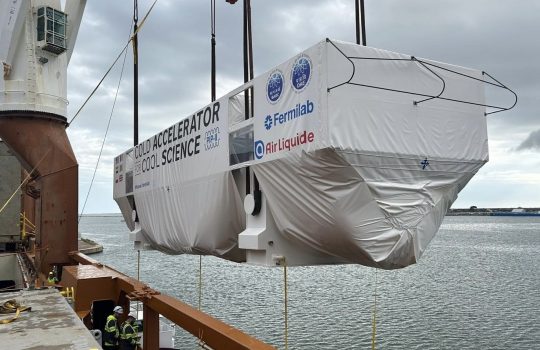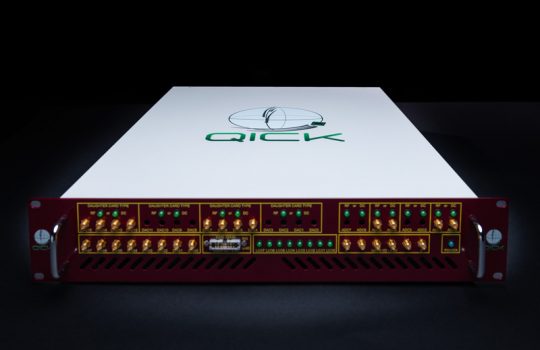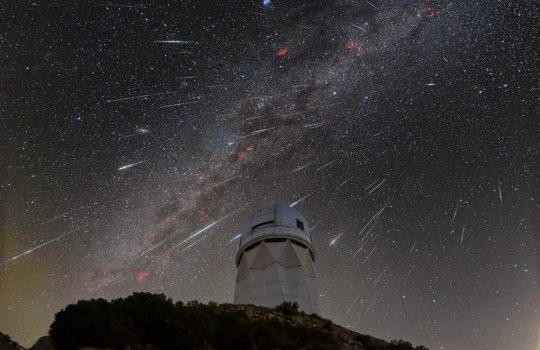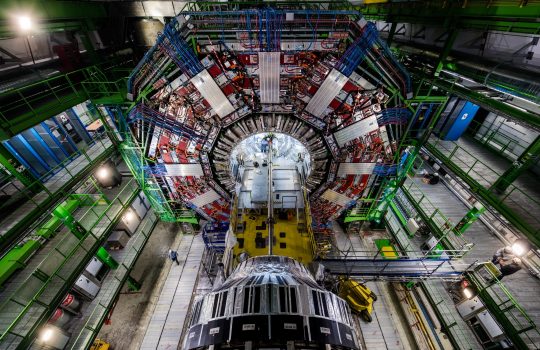Fermilab leads project to develop novel quantum sensor
Fermilab is finalizing a partnership with Diraq and several universities for the Quandarum project. The project team intends to combine extreme environment electronics and silicon spin qubits to develop a quantum sensor that could profoundly impact the field of high-energy physics.
DESI opens access to the largest 3D map of the universe yet
A new data release from the Dark Energy Spectroscopic Instrument is now available for researchers to explore. The collection contains information on 18.7 million galaxies, quasars, and stars — the largest dataset of its kind ever shared.
New DESI results strengthen hints that dark energy may evolve
The Dark Energy Spectroscopic Instrument used millions of galaxies and quasars to build the largest 3D map of our universe to date. Combining the DESI data with other experiments shows signs that the impact of dark energy may be weakening over time — and the standard model of how the universe works may need an update.
Fermilab building named for renowned scientist, Dr. Helen Edwards
President Biden recently signed a bicameral resolution that changes the name of Fermilab’s Integrated Engineering Research Center to the Helen Edwards Engineering Research Center. The building’s new name honors the late Dr. Helen Edwards, a renowned particle physicist at Fermilab.
Fermilab undergoes leadership change
Dr. Lia Merminga stepped down as laboratory director on Jan. 13, 2025. Dr. Young-Kee Kim has been named as interim director. The new search for a permanent director will begin immediately.
Fermilab expecting 95-ton coldbox delivery
The coldbox, a vital piece of Fermilab’s new linear accelerator, is on a two-month voyage from France to its new home in Batavia, Illinois. It will be at the heart of the cryogenic system for the lab’s upgraded accelerator complex.
Customizable quantum control toolkit developed at Fermilab ready for commercial production
The Quantum Instrumentation Control Kit now features updated software and firmware and new companion hardware called QICK box. This Fermilab-developed system combines everything a scientist might need to conduct mind-bending research in a pizza-box-sized case.
New DESI results weigh in on gravity
Researchers used the Dark Energy Spectroscopic Instrument to map how nearly 6 million galaxies cluster across 11 billion years of cosmic history. Their observations line up with what Einstein’s theory of general relativity predicts.
Fermilab and Spain sign agreement to strengthen collaboration on the Deep Underground Neutrino Experiment
The new memorandum of understanding will elevate the collaboration between the Spanish Ministry of Science and Fermilab in developing detection systems and the physics of the Deep Underground Neutrino Experiment.
New results from the CMS experiment put W boson mass mystery to rest
Physicists on the CMS experiment announce the most elaborate mass measurement of a particle that is notoriously difficult to study and has captivated the physics community for decades.

